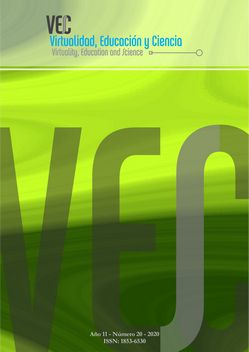Free hardware in the classroom: an experience of training in the use of open educational resources in technical schools in Tucumán, Argentina
DOI:
https://doi.org/10.60020/1853-6530.v11.n20.27457Keywords:
educational robotics; free software; free hardware; GNU/Linux; Conectar igualdadAbstract
Robotics, like many areas of social knowledge, when used in the educational context has multiple applications. In this way, it can be used in the classroom as a transversal tool for learning mathematical concepts, physics or programming languages. But what makes it relevant in the contemporary educational context? To give an account of this, in this paper we will analyze some experiences related to the workshop "Designing your own robot", held between 2014-2015 by CIIDEPT (Center for Innovation and Research for Educational Development, Productive and Technological) and designed to train teachers and students in the design and home manufacture of robots for teaching programming, using open specifications hardware and free software as an open educational resource developed by the project ICARO.
Downloads
References
BRAVO SÁNCHEZ, F. Á. y FORERO GUZMÁN, A. (2012). La robótica como un recurso para facilitar el aprendizaje y desarrollo de competencias generales. Education in the knowledge society (EKS), 13(2), 120-136.
BUSANICHE, B., y otros. (2010). Monopolios artificiales sobre bienes intangibles, 2007.
de Educación, C. F. (2010). Las políticas de inclusión digital educativa el Programa Conectar Igualdad. Consejo Federal de Educación Argentino, Resolución CFE, (123710). Recuperado de http://skat.ihmc.us/rid=1M4M20FDJ-VQ84YQ-3RP3/Inclusion%20digital.pdf
GONZÁLEZ, Z., y HERNÁNDEZ II, G. M. (2013). Recursos educativos abiertos. Recuperado de http://www.medigraphic.com/pdfs/educacion/cem-2013/cem133p.pdf
HEPP K, P.; MERINO D., M. E.; BARRIGA J., M. V. y HUIRCAPÁN A, A. (2013). Tecnología robótica en contextos escolares vulnerables con estudiantes de la etnia Mapuche. Estudios pedagógicos (Valdivia), 39(ESPECIAL), 75-84. https://doi.org/10.4067/S0718-07052013000300006
MARTÍNEZ, S. L., MAROTIAS, A., y AMADO, S. (2013). Inclusión digital en la educación pública argentina. El Programa Conectar Igualdad. Revista Educación y Pedagogía, 24(62), 205–218.
MORALES CAPILLA, M., TRUJILLO TORRES, J. M., y RASO SÁNCHEZ, F. (2015). Percepciones acerca de la integración de las TIC en el proceso de enseñanza-aprendizaje de la universidad. Pixel-Bit. Revista de Medios y Educación, (46). Recuperado de http://www.redalyc.org/html/368/36832959012/
OLIVENCIA, J. J. L., y MARTÍNEZ, N. M. M. (2015). Recursos y estrategias educativas basadas en el uso de hardware de bajo coste y software libre: Una perspectiva pedagógica intercultural. Revista científica electrónica de Educación y Comunicación en la Sociedad del Conocimiento, 1(15). Recuperado de http://eticanet.org/revista/index.php/eticanet/article/view/63
OPEN SOURCE HARDWARE ASSOCIATION, (s. f.). Declaración de Principios 1.0. Recuperado de https://www.oshwa.org/definition/spanish/ [02/10/2019]
PAPERT, S. (1980). Mindstorms: Children, computers, and powerful ideas. Basic Books, Inc.
PITTÍ PATIÑO, K.; CURTO DIEGO, B. y MORENO RODILLA, V. (2010). Experiencias construccionistas con robótica educativa en el Centro Internacional de Tecnologías Avanzadas. Teoría de la Educación, 11(1), 26.
RAYMOND, E. S. (1998). La catedral y el bazar. The Linux Logic Home Page, 12. Recuperado de http://www.athanazio.com/downloads/livros/catedral-ou-bazar.pdf
SEYMOUR PAPERT. (1987). Desafío de la mente. Buenos Aires, Argentina. Editorial Galápago
STALLMAN, R. M. (2007). Software libre para una sociedad libre. Traficantes de Sueños. Recuperado de https://www.gnu.org/philosophy/fsfs/free_software.es.pdf [02/10/2019]
URUGUAY, una computadora para cada niño: Plan Ceibal: los ojos del mundo en el primer modelo OLPC a escala nacional. (2009). Prentice Hall.
Downloads
Published
How to Cite
Issue
Section
License
The generation of derivative works is allowed as long as it is not done for commercial purposes. The original work may not be used for commercial purposes.


